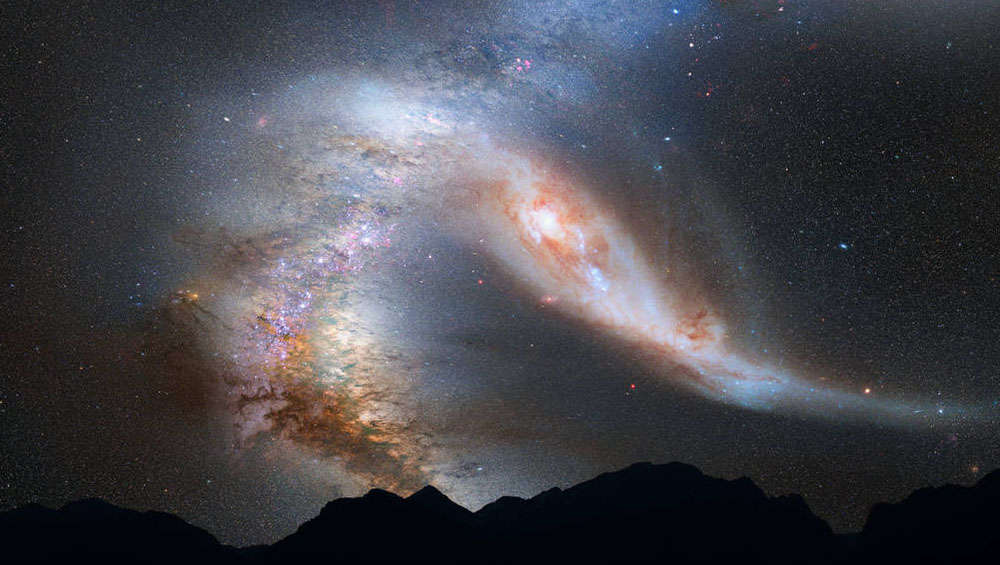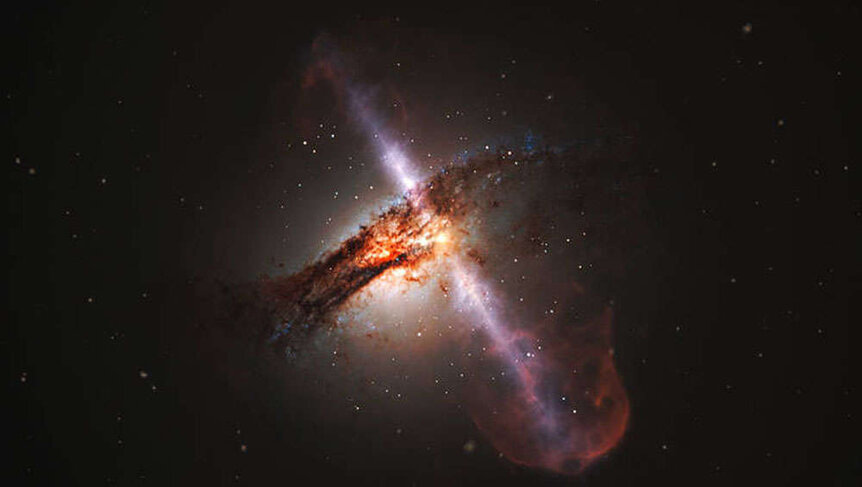Create a free profile to get unlimited access to exclusive videos, sweepstakes, and more!
Epic galactic crashes can starve supermassive black holes to death—or is it undeath?

Black holes are almost impossible to defeat — emphasis on “almost.” If you’re going to take down a supermassive black hole, or at least leave it seriously messed up, the only way to do that is a massive head-on galactic collision. It was previously thought that such a collision could actually feed a black hole that lurks in the galactic core and give it more of the energy it craves. Not exactly, say scientists from the University of Tokyo, who used computer simulations to find out that the star stuff surrounding a black hole (its accretion disc) can actually be ejected if its galaxy is head-butted by another one.
“Only head-on collisions strip the material surrounding the black hole,” Yohei Miki, who coauthored a study recently published in Nature Astronomy, told SYFY WIRE. “A million years is the duration of this event; the infalling satellite galaxy interacts with the central region of the host galaxy over a crossing time around a million years.”
So the black hole wouldn’t be totally dead, but more like a zombie for something around a million years. It would be suppressed from taking in the gargantuan amounts of light and stardust and just about any other unfortunate molecule that fell into its gravitational territory. Anything in space that ventures too close to a black hole is basically destined for doom. Photons, or light molecules, along with dust and gas that were either supposed to form stars or came from one that was ripped apart by the black hole itself, keep spiraling in this accretion disc until they finally cross the event horizon and end up in the black hole’s gaping maw.
Galaxies have several ways of smashing into each other. Sometimes smaller galaxies scratch the outer regions of more massive ones. The Milky Way is thought to have experienced a close call with at least one satellite galaxy that got near enough to warp it. Earth is actually buried deep inside that warp. A smaller galaxy can also pass through or merge with a larger one. When galaxies collide head-on, it can be a gruesome scene in which the smaller one is ripped apart by the stronger tidal forces of the larger one. Whoever has the most gravity wins.
If one galaxy is destroyed by another, that should increase the amount of energy available for a nuclear black hole to devour, which is why Miki and his colleagues ran computer simulations to see what really goes on out there. These simulations looked into how the matter in the accretion disc is affected by galactic collisions. The results were surprising. Sometimes a smaller galaxy passing right through a larger one and runs into the supermassive black hole lurking in its core can tear away the accretion disc. The trespassing galaxy might not have more gravity than the larger galaxy it has invaded, but if it has more gravity than the black hole, all bets are off.
After a black hole gets gouged by a galactic collision, it can look forward to about a million years of biting the dust, though the exact stretch of time that black hole will be out of commission is unknown. Our own black hole (Sag A*) is still kicking but not exactly the most voracious. Further studies that combine theory, observation and simulations could tell us why.
“How long this suppression mechanism lasts is exactly the key question of our future studies,” Miki said. “The activity of our own MBH is extremely low and the reason for the low activity is not yet understood. Our results might explain the origin of this extremely low activity. Next, we are planning to use supercomputers so we can perform detailed simulations, with a larger computational box for a longer duration.”
Any black holes headed into galactic fights should take this as a warning.















